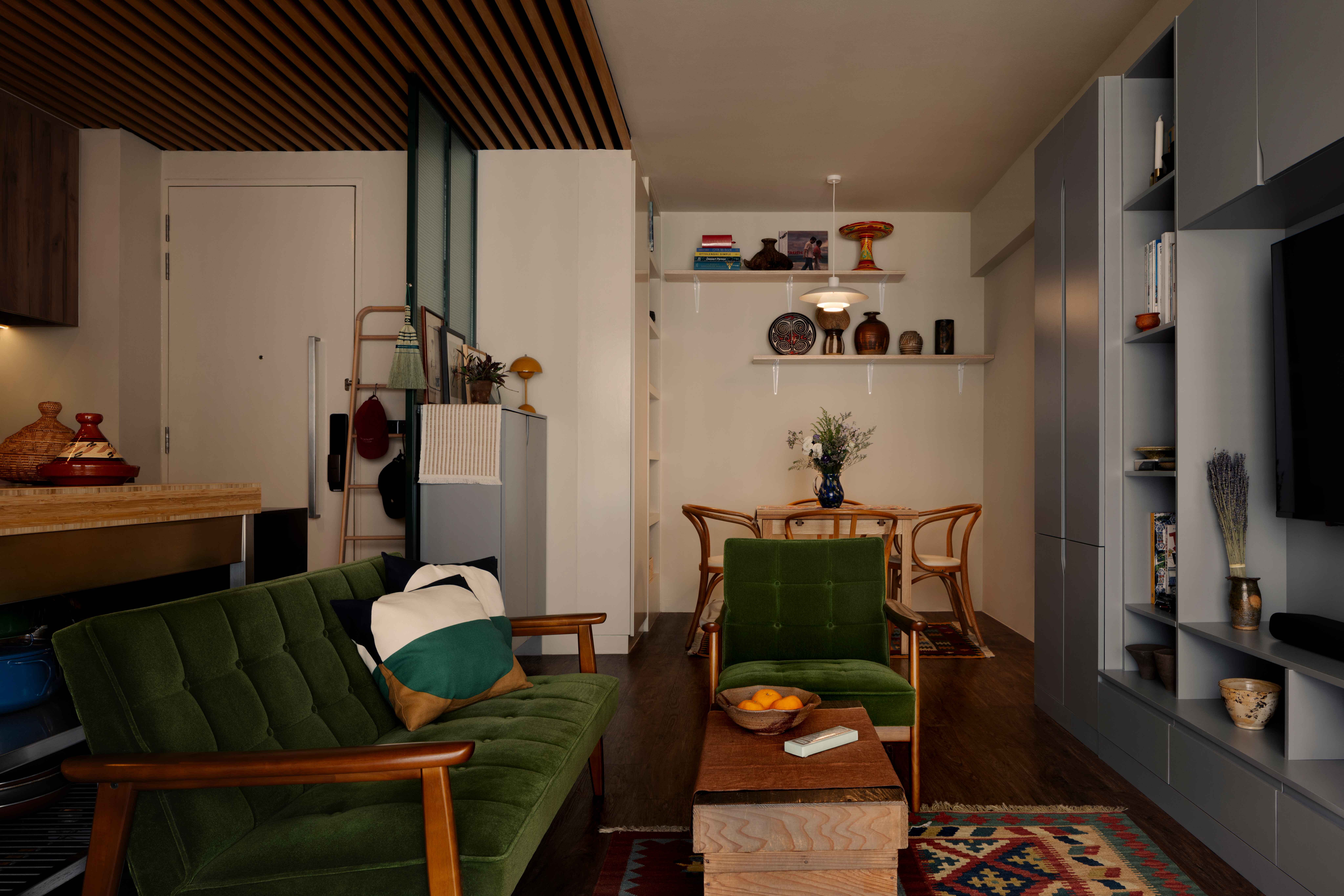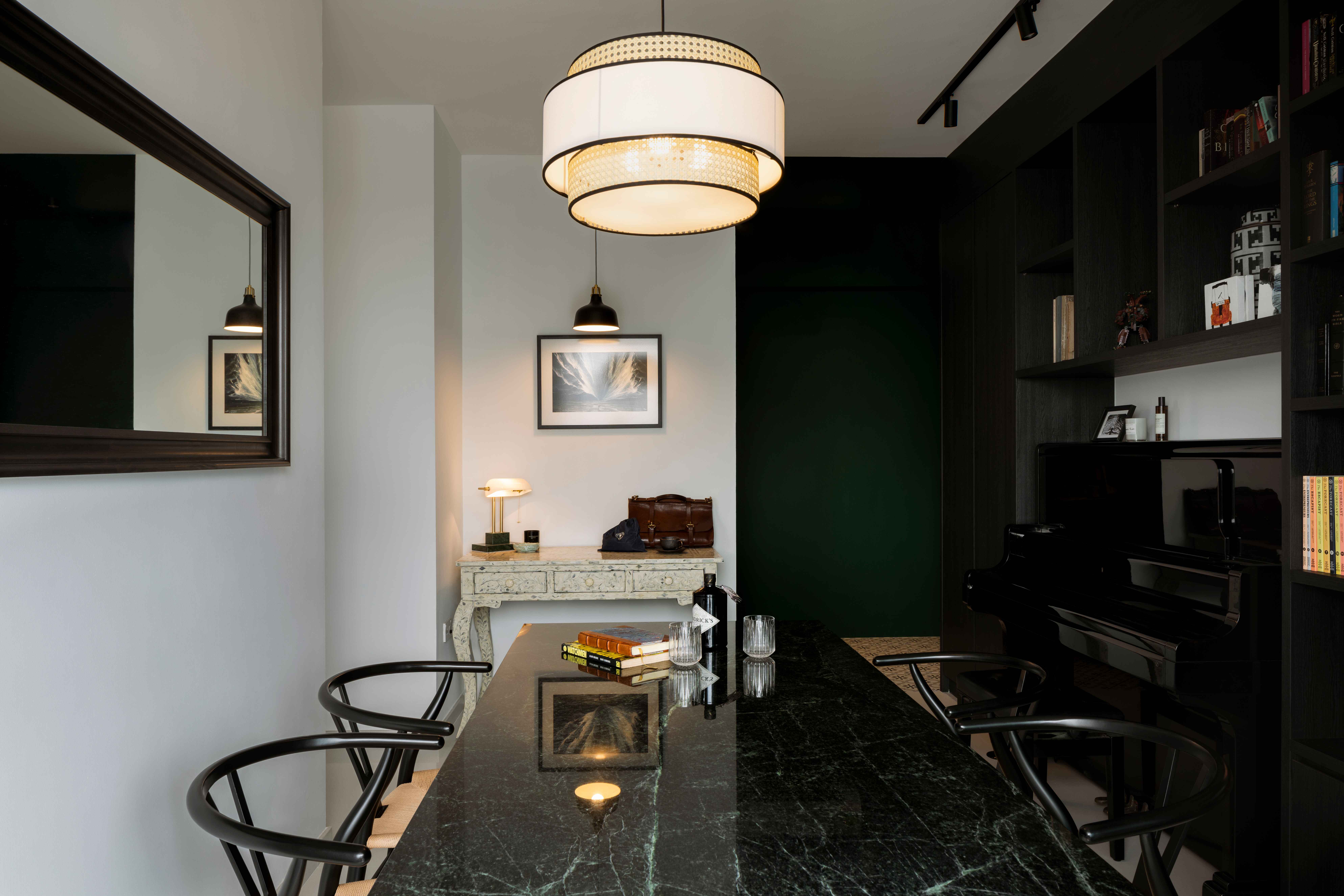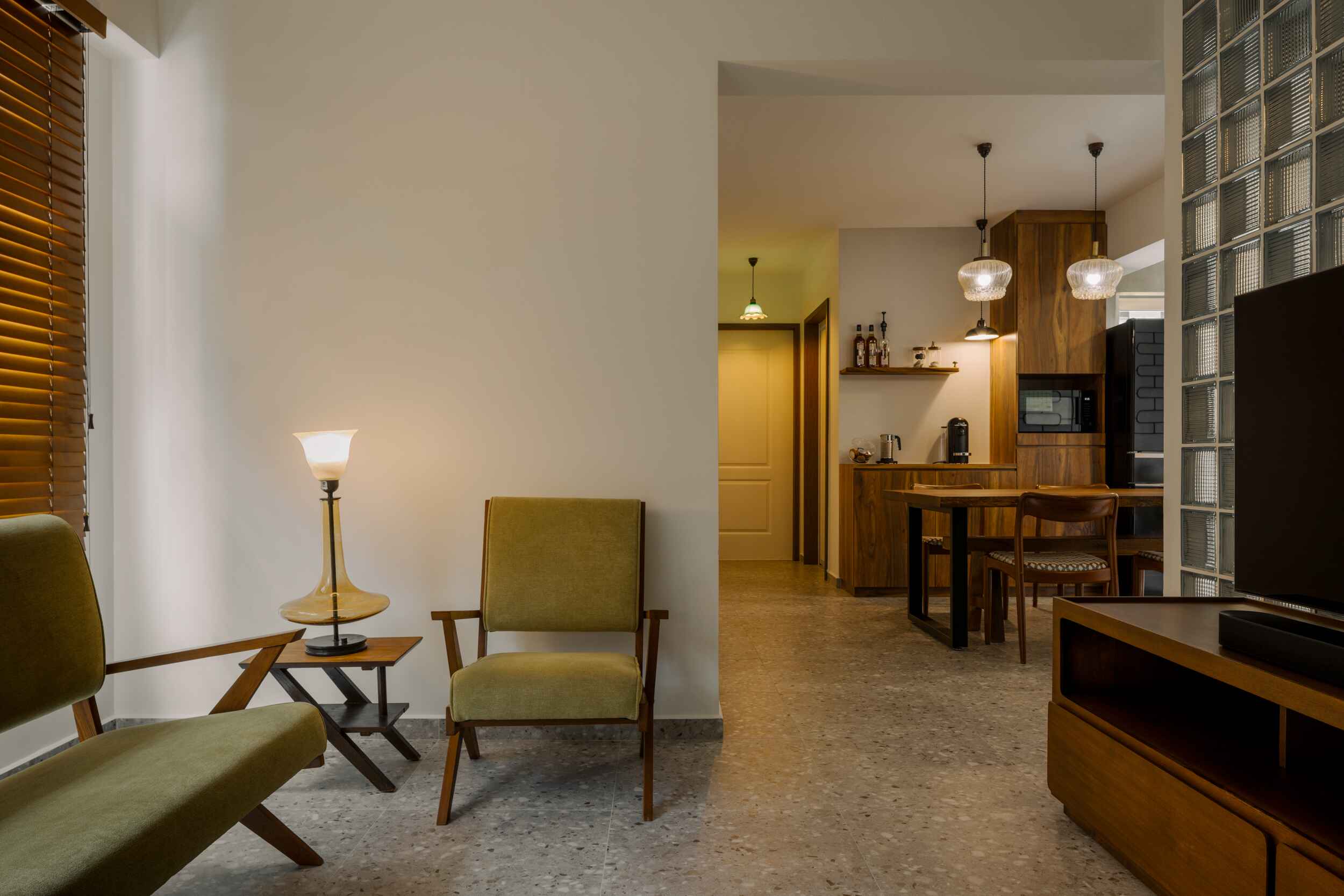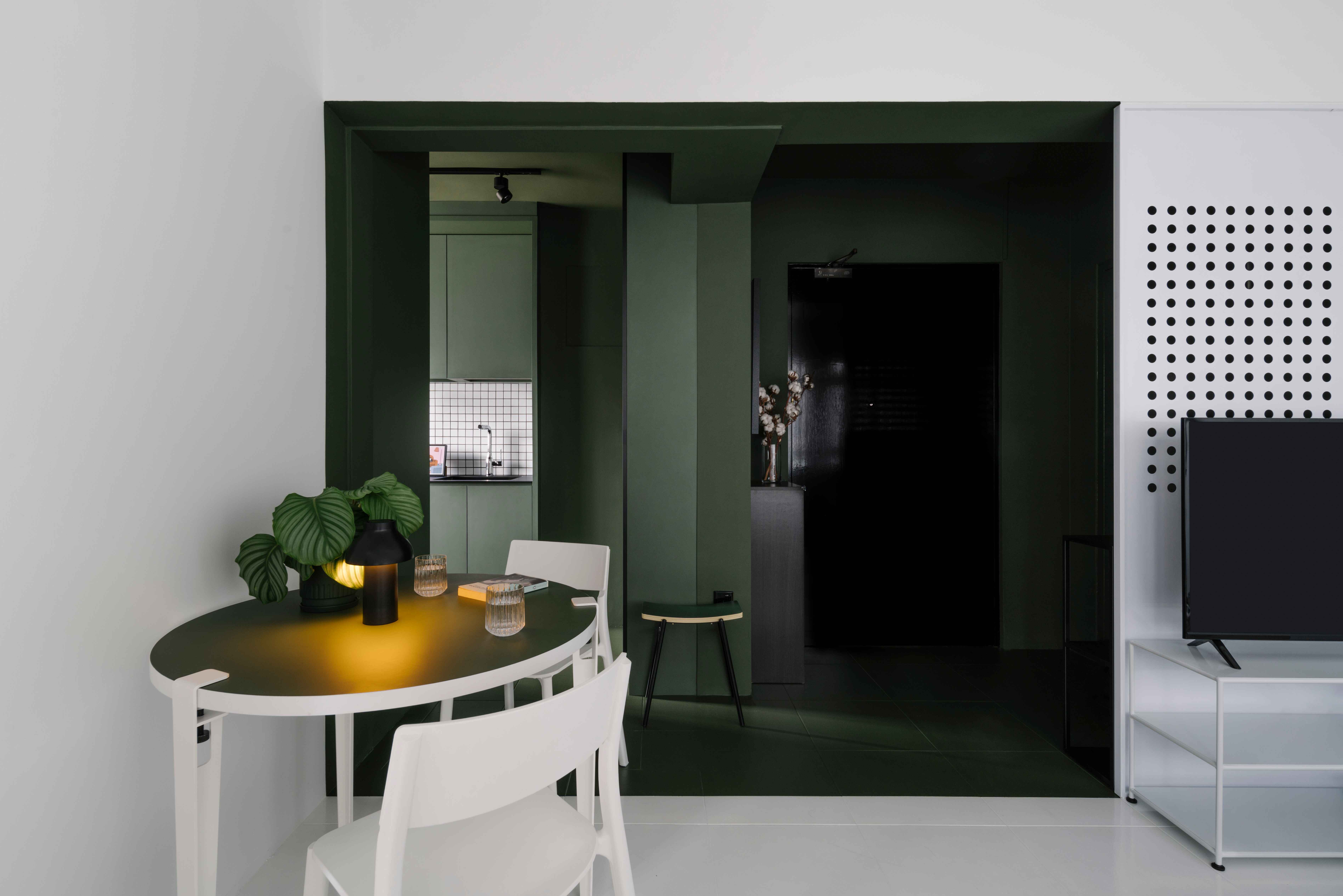Give us an overview of your interior design studio, as well as projects that have stood out since starting it.
We are a boutique interior design firm that embodies a steadfast commitment to authentic and meaningful design. We’ve had the pleasure of working on bold projects that explore different concepts instead of focusing on a theme and the outcome is usually more satisfying and different from the existing interior design trends in Singapore. Since starting Resistance, we have been featured in various local and international media outlets and won awards through our interior design approach.
A DIFFERENT DESIGN POINT OF VIEW
The Joy of Designing Small Spaces
19 Jul 2024
Big doesn’t always mean better. We spoke to Weikai Tan and Jack Loh, founders of Resistance, a local award-winning interior design studio, on the challenges, intricacies, and joys of designing small residential spaces.

Based on your portfolio, Resistance has worked on several smaller residential spaces – ones that are below 1000 sqft. What excites you about these projects?
Smaller spaces are exciting to work on as they offer a unique challenge of maximizing impact and functionality within a compact footprint. It requires creativity, efficiency, and a deep understanding of the client's needs. The limited square footage encourages us to think outside of the box. It also allows us and the client to explore what is important and necessary. Every element, from materials to furniture, must serve a purpose, making each design decision a meaningful contribution to the overall narrative.
What are some misconceptions about smaller homes? Is bigger not always necessarily better?
There's a misconception that smaller homes are inconvenient and impractical, especially for families or individuals with diverse needs. However, smaller homes can offer convenience by promoting simplicity, easier maintenance, and a closer proximity to essential amenities and services.
And yes – bigger is not always better when it comes to homes. Smaller homes offer several advantages, including lower maintenance costs, reduced environmental impact, and the potential for closer-knit communities.
(Related: Telling stories through interior design)

What approach do you take when it comes to designing smaller spaces? How do you manage the expectations of the client?
By cleverly integrating the essence of style into interior design. Conversations with clients emphasize that minimalism, for example, represents a lifestyle rather than solely a visual aesthetic. It goes beyond merely concealing items. Interior design and lifestyle share a symbiotic relationship that shapes our approach.
In your experience, what kind of lifestyle do your clients who opt for smaller spaces lead? What draws them to such a space and how do you make it work better for them?
While the desire for expansive spaces is common, our primal instincts often draw us to the comfort and intimacy of smaller, enclosed environments. The allure of the cave, with its dark recesses and natural enclosure, speaks to our fundamental need for safety and sanctuary. In the depths of the cave, early humans found refuge from the elements and predators, surrounded by the cool, damp earth. It became a symbol of primordial security, a haven amidst chaos.
Even today, we are drawn to these intimate spaces, seeking refuge and solace in their embrace. "The Poetics of Space" spoke about how these small, enclosed spaces speak to something deep within us, reminding us of our ancient connection to the earth and the primal comfort of home.
There's been a noticeable surge in the popularity of mature estates and conservation houses among people seeking a nostalgic living experience. These properties, often characterized by walk-up apartments and smaller yet charming living spaces, are gaining traction. Despite their limited square footage, these estates offer a unique sense of comfort and allure that surpasses the appeal of larger, more modern developments.
(Related: Elevate the home with these pieces from Meridiani)


In Singapore, what are some common interior design mistakes that owners of smaller sized homes make? What kind of design considerations should they consider?
People often buy things quickly, filling their homes based on perceived needs, which can lead to clutter. Interior design is a journey, and homes should evolve with our needs. Predicting future needs rather than simply reacting prevents overbuying. It's better for homes to grow with memories than to aim for perfection.
Can you share some furniture styles or brands that, in your professional point of view, work well in smaller spaces?
Our favorite strategies include using furniture with legs, such as Knoll, Vitra, USM Haller, and Carl Hansen. These pieces, with their fine details, create a sense of openness and timelessness.
Additionally, transparent pieces like the Ghost chair can add a fun element while creating a sense of invisibility and openness in smaller spaces. Metallic and mirrored furniture, when strategically placed, can further enhance this illusion of invisibility, seamlessly blending into the surroundings. Blending furniture with the interior design enhances cohesiveness and expands the perceived space. Exploring vertical spaces with options like Vitsœ and wall-mounted String furniture shelving and cabinets can also help to visually enlarge the space.










 Back
Back
